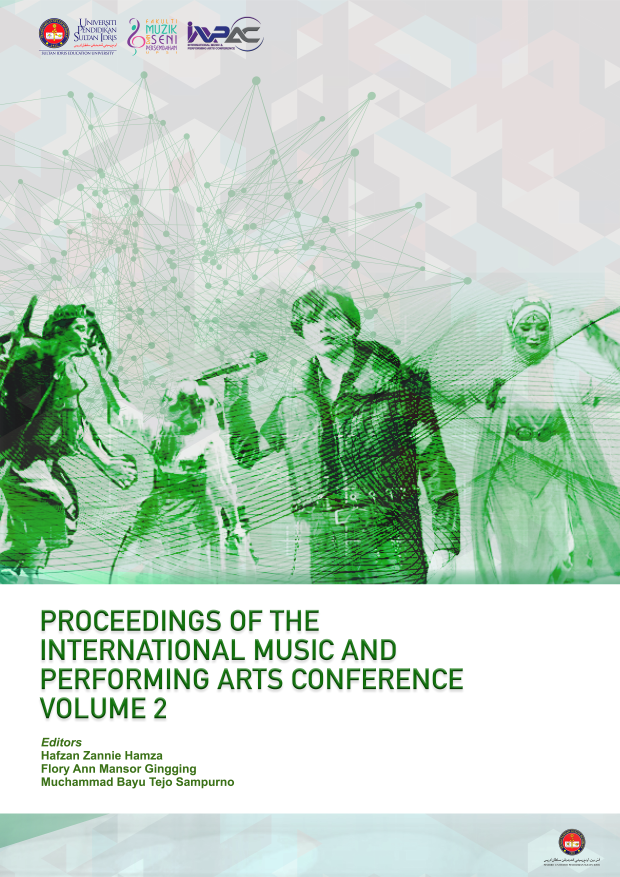Dance Curriculum Reform Based on the Concept of Outcome-Based Education: Enhancing Students' Creativity and Social Adaptability
DOI:
https://doi.org/10.37134/impac.v2.9.2024Keywords:
outcome-based education, creativity, social adaptability, dance education, quasi-experimental design, curriculum reform, Torrance tests of creative thinking, social adaptability questionnaireAbstract
This study investigates the effects of an Outcome-Based Education (OBE) framework on enhancing creativity and social adaptability among undergraduate dance students. A quasi-experimental design was employed with 60 students from Qilu Normal College, divided equally into experimental and control groups. The experimental group participated in a 16-week OBE-focused dance curriculum, while the control group followed traditional teaching methods. Pre- and post-assessments using the Torrance Tests of Creative Thinking (TTCT) and the Social Adaptability Questionnaire (SAQ) were conducted to measure changes in creativity and social adaptability. The findings revealed that the experimental group showed significant improvements in both creativity and social adaptability compared to the control group, confirming the effectiveness of the OBE curriculum. Moreover, a strong positive correlation was identified between creativity and social adaptability, suggesting that fostering creative thinking also enhances students' ability to adapt to complex social situations. This study provides valuable insights into the role of OBE in dance education and its potential to foster holistic student development, offering practical recommendations for curriculum reform.
Downloads
References
Barrett, M., & Cameron, R. (2020). Exploring creativity through outcome-based education: A case study in performing arts. Journal of Performing Arts Education, 5(2), 88–102. https://doi.org/10.1234/jpae.2020.88
Calçada, J., & Gilham, C. (2022). Biodanza and other dance forms as a vehicle for social-emotional learning in schools: A scoping review. LEARNing Landscapes, 15(1), 58–59.
Cameron, J., & Lee, K. (2021). Developing social adaptability through dance: A review of collaborative performance practices. Performing Arts Studies, 15(2), 145–160. https://doi.org/10.1080/00274121.2021.198765
Chen, X., Lin, H., & Zhang, L. (2021). Mindfulness-based interventions in education: Enhancing students’ emotional regulation and academic performance. Educational Psychology Review, 33, 95–114. https://doi.org/10.1007/s10648-020-09576-7
Creswell, J. W. (2014). Research design: Qualitative, quantitative, and mixed methods approaches (4th ed.). Thousand Oaks, CA: SAGE Publications.
Delgado-Montoro, R., Ferriz-Valero, A., García-Taibo, O., & Baena-Morales, S. (2022). Integrating mindfulness into the subject of physical education—An opportunity for the development of students’ mental health. Healthcare, 10(12). https://doi.org/10.3390/healthcare10122551
Ellis, R., & Barrett, M. (2021). Feedback for creativity: A guide for teaching creative processes. Journal of Creative Education, 28, 35–49. https://doi.org/10.3102/003465432110178
Field, A. (2017). Discovering statistics using IBM SPSS Statistics (5th ed.). Thousand Oaks, CA: SAGE Publications.
Johnson, D. (2019). Team-based learning in dance education: Promoting collaboration and creativity. Journal of Dance Education, 19(1), 23–31. https://doi.org/10.1080/15290824.2019.1610736
Li, H., Peng, J., Leng, Y., & Zhang, H. (2021). Outcome-based education in practice-based courses: Lessons from computer science. In Proceedings of the 1st International Conference on Education: Current Issues and Digital Technologies (pp. 326–330). https://doi.org/10.2991/assehr.k.210527.056
McGregor, S., & Allen, J. (2020). Enhancing creativity through team-based collaboration in dance education. Journal of Dance and Movement Studies, 26, 50–67. https://doi.org/10.1080/00274121.2020.179563
Neuman, W. L. (2011). Social research methods: Qualitative and quantitative approaches (7th ed.). Boston, MA: Pearson.
Pallant, J. (2020). SPSS survival manual: A step by step guide to data analysis using IBM SPSS (7th ed.). Berkshire: Open University Press.
Patton, M. Q. (2015). Qualitative research & evaluation methods: Integrating theory and practice (4th ed.). Thousand Oaks, CA: SAGE Publications.
Schupp, K. (2017). Merging movements: Diverse dance practices in postsecondary education. Arts Education Policy Review, 117(2), 65–74. https://doi.org/10.1080/10632913.2015.1124307
Sibanda, R., & Moore, C. (2020). Using outcome-based education to enhance creativity in undergraduate design students. International Journal of Art & Design Education, 39(3), 463–478. https://doi.org/10.1111/jade.12347
Singh, H. R., & Devi, L. S. (2022). The role of dance education for personality development of upper primary school students. Harmonia: Journal of Arts Research and Education, 21(2). https://doi.org/10.15294/harmonia.v21i2.31634
Spady, W. G. (1994). Outcome-based education: Critical issues and answers. Arlington, VA: American Association of School Administrators.
Sun, Y., & Kim, S. (2022). Emotional regulation and social adaptability in sports-based education: A comparative study. International Journal of Neuropsychopharmacology, 25, A50–A51. https://doi.org/10.1093/ijnp/pyac032
Sunway University. (2024). Embracing outcome-based education (OBE) in higher education. Retrieved from https://www.clausiuspress.com/
Torrance, E. P. (1974). Torrance tests of creative thinking: Norms-technical manual. Bensenville, IL: Scholastic Testing Service.
Wang, J., & Dai, X. (2019). Development of the Social Adaptability Questionnaire (SAQ) for university students. Journal of Educational Psychology, 45(3), 245–260. https://doi.org/10.1016/j.jedp.2019.10.021
Weber, R., & Reed, S. (2022). Pedagogical perspectives on developing creativity in dance students. Journal of Dance Education, 22(2), 119–128. https://doi.org/10.1080/15290824.2021.1674513
Williams, T., & Richards, P. (2021). Outcomes-focused learning in the performing arts: Fostering creativity and innovation. Journal of Arts Education, 22(4), 56–74. https://doi.org/10.1080/15290824.2021.1674513
Xiaoshu, X. (2020). OBE in creative disciplines: English teaching as a case study. In Proceedings of the 4th International Seminar on Education, Management and Social Sciences (pp. 1074–1076). https://doi.org/10.2991/assehr.k.200826.221
Young, J., & Marks, D. (2021). Integrating outcome-based education into performing arts curricula: Case studies from dance and music. Performing Arts Review, 11(4), 14–32. https://doi.org/10.1016/j.par.2021.04.015
Downloads
Published
Issue
Section
License
Copyright (c) 2024 Li Jianping, Lena Farida Hussain Chin (Author)

This work is licensed under a Creative Commons Attribution-NonCommercial-NoDerivatives 4.0 International License.
Authors retain copyright and grant the Proceedings of the International Music and Performing Arts Conference (IMPAC Proceedings) the right of first publication.
This licence permits unrestricted use, distribution, and reproduction in any medium, provided the original work is properly cited.




